By Susanne von Rosenberg, UC Master Gardener of Napa County
If you live in one of Napa County's towns, you may be one of the lucky gardeners who does not have to deal with gophers. Gardeners who live in or near the county's rural areas are usually very familiar with the damage that gophers can cause.
Technically, these annoying critters are called pocket gophers and belong to the species Thomomys. Botta's pocket gopher, T. bottae, is the most widespread gopher species in California.
Gophers typically feed on the roots and fleshy portions of plants they encounter while digging, but they will also pull whole plants into the ground. They feed on many garden crops, ornamental plants, vines, shrubs and trees. Gophers rarely venture above ground. When they do, they usually stay within a few inches of their exit hole.
They may damage plastic water lines and sprinkler systems by gnawing on them. (Six to eight inches of coarse gravel one inch or more in diameter around underground water or sprinkler lines can deter them.) Gophers can also cause indirect damage. Tunnels created by gophers can divert irrigation water away from your crops, stunt plants by creating an air gap that limits root growth, or tip over trees by destabilizing the soil around them.
Adult gophers are six to ten inches long, depending on their species, and are superbly equipped for tunneling. They even have special lips that they can close behind their incisor teeth to keep dirt out of their mouths when they're digging with their teeth. Gophers are active all year, alas.
You know you have gophers if you see crescent- or horseshoe-shaped mounds, with a hole (usually plugged with a bit of soil) off to the side. Round mounds with holes in the center are made by moles; controlling moles requires a different approach than controlling gophers.
A single gopher can make several mounds in a day. They prefer soil that's easy to dig, so in the dry season they tend to head for irrigated areas (like your garden).
A single burrow system can cover up to 2,000 square feet. The burrows are about 2½ to 3½ inches in diameter. Feeding burrows usually are 6 to 12 inches below ground; nest and food storage areas can be much deeper. Short, sloping side tunnels connect the main burrows to the surface. The gopher mounds you see are located at the end of these side tunnels.
You can control gopher damage by killing the gophers or excluding them from plants you want to protect. To exclude gophers, use ½-inch hardware cloth as your barrier. (You may have heard it referred to as gopher wire.) Plant young trees in a wide collar of gopher wire at least 18 inches deep, which is below the typical depth of feeding tunnels. Leave the bottom of the collar open and make sure the top extends 6 or more inches above the soil line to discourage gophers from above-ground dining.
Line the bottom of your raised beds with hardware cloth and extend the lining halfway up the sides. For open beds, simply lay down a six- to eight-inch-wide band of gopher wire about six to eight inches below the top of the bed. You can also buy or make wire baskets for susceptible plants, such as potatoes or carrots, planting them directly in the baskets.
Alternatively, you can kill gophers by using kill traps or poison baits. Trapping is more environmentally friendly. It avoids the risk of poisoning wildlife that might feed on poisoned gophers, as well as the risk of accidents with kids and pets. Dead gophers decomposing in their burrows can also cause a big stink.
Several types and brands of gopher traps are available. If you do choose to use poison bait, carefully follow all manufacturer's directions.
Successful trapping or baiting depends on locating the main burrows, usually 8 to 12 inches from the hole in the mound. Probe to make sure you've found the right location, and then dig a hole to set your traps or place poison. If you haven't captured a gopher within two days, change the trap location.
What about natural control options? Many predators eat gophers, but they rarely eat every gopher. instead they move on to hunt at richer locations.
Unfortunately, relying entirely on natural predators to control gophers is probably not enough. Popular myths to the contrary, there are no repellents currently available to protect plants from gophers. While plants such as gopher purge (Euphorbia lathyrus), castor bean (Ricinus communis) and garlic are often suggested, research hasn't confirmed any benefits. Devices reputed to control gophers by frightening or annoying them are also ineffective, and putting chewing gum or laxatives in burrows to kill gophers is yet another a myth.
Controlling gophers is an ongoing effort. Level any old mounds to see when new gophers move in. They can and do move in from other areas. Go after any new ones right away. It's much easier to control one or two gophers than an established population.
Free Talk: UC Master Gardeners will discuss “Growing Summer Vegetables” at the Napa Public Library on Thursday, March 7, from 7 p.m. to 8 p.m. Learn what you can grow in the summer, what to plant and when, and how to have a harvest all summer long. No registration required.
Workshop: The U. C. Master Gardeners of Napa County will present a workshop on “Growing Spring and Summer Vegetables” on Saturday, March 9, from 9:30 a.m. to 11:30 a.m., at the University of California Cooperative Extension, 1710 Soscol Avenue, Napa. Do you want nutritious, easy-to grow and utterly fresh food from your garden this spring and summer? Learn what the garden needs to successfully produce spring and summer vegetables from seeds and plant starts. In addition to growing basics and hands-on activities, this program includes watering, fertilizing and harvesting tips, with a dash of Integrated Pest Management for pest and disease control. The delight of growing your own groceries is matched only by savoring them at harvest. Online registration (credit card only); Mail-in/Walk-in registration (check only or drop off cash payment).
Workshop: The U. C. Master Gardeners of Napa County will present a workshop on “Summer Vegetables” on Sunday, March 10, from 1 p.m. to 3 p.m., at Yountville Community Center, 6516 Washington Street, Yountville. Get tips for growing your own summer vegetables. Learn some basics, get keys to success, and do hands-on activities to learn about new varieties and review old favorites. Enjoy healthy vegetables taken straight from your garden to your table. The delight of growing your own vegetables is matched by savoring them at harvest. Online registration or telephone the Parks & Recreation Department at 707-944-8712.
Master Gardeners are volunteers who help the University of California reach the gardening public with home gardening information. U. C. Master Gardeners of Napa County (http:/napamg.ucanr.edu) are available to answer gardening questions in person or by phone, Monday, Wednesday and Friday, 9 a.m. to Noon, at the U. C. Cooperative Extension office, 1710 Soscol Avenue, Suite 4, Napa, 707-253-4143, or from outside City of Napa toll-free at 877-279-3065. Or e-mail your garden questions by following the guidelines on our web site. Click on Napa, then on Have Garden Questions? Find us on Facebook under UC Master Gardeners of Napa County.
Attached Images:
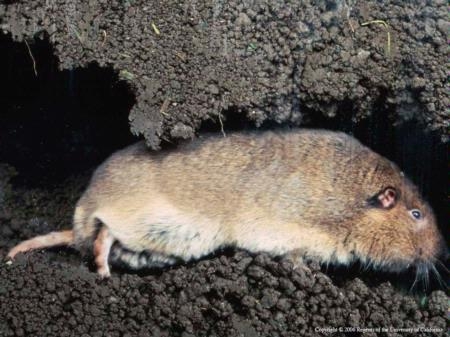
Pocket gopher (UC ANR)
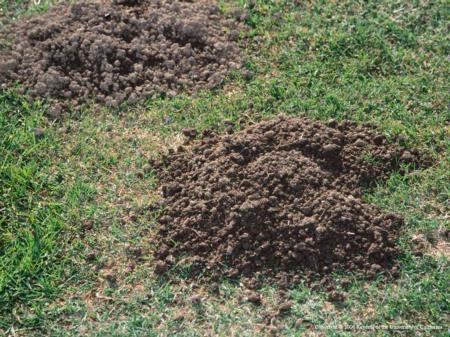
Gopher mound. Note the crescent shape and round 'plug' in the center. (UC ANR)
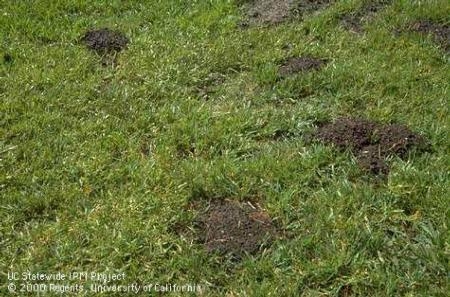
Gopher mounds in turf. If you have gophers, you have seen this! (UC ANR)
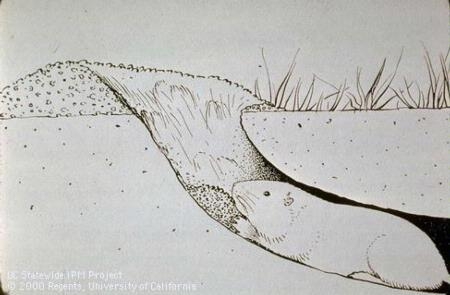
Pocket gopher in tunnel (UC ANR)
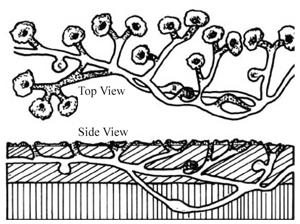
Gopher burrow illustration. All those round shapes are gopher mounds. (Univ of Nebraska-Lincoln)
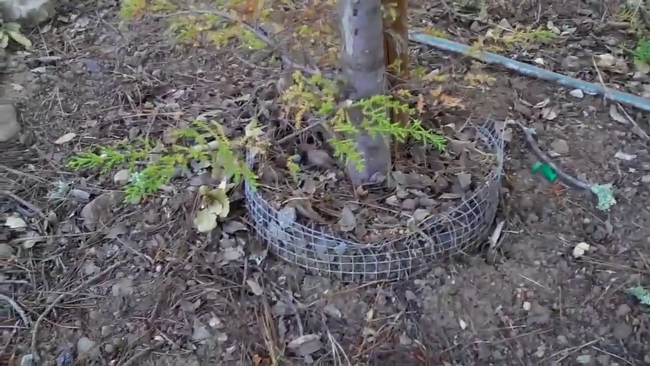
Leave a few inches above ground (You Tube)

From UC IPM, EVERYTHING you need to know about pocket gophers, including videos: http://ipm.ucanr.edu/PMG/PESTNOTES/pn7433.html (UC IPM)